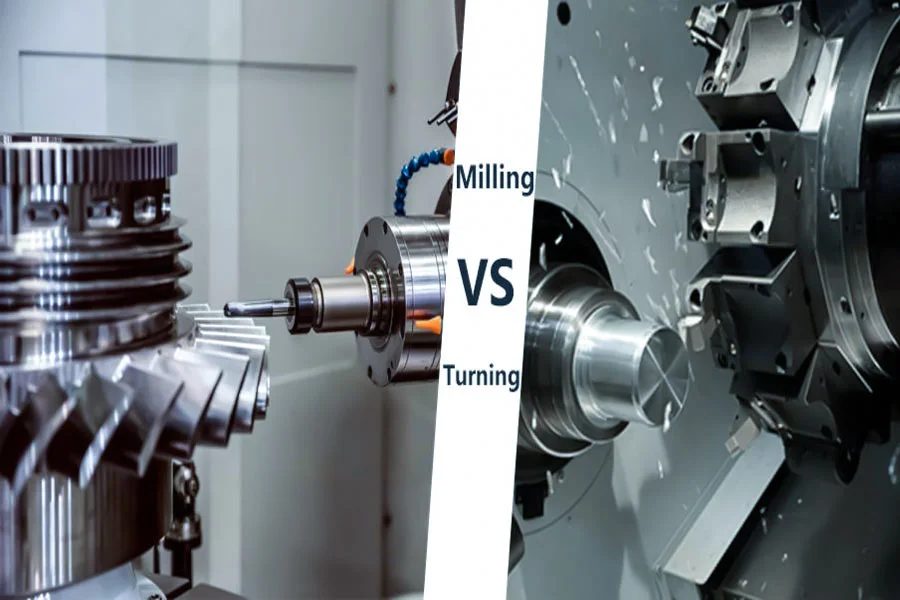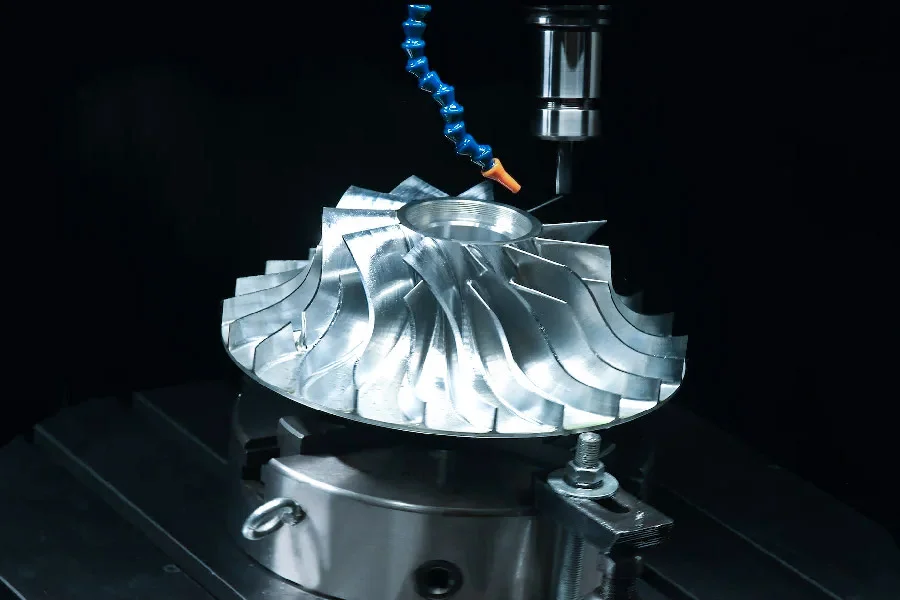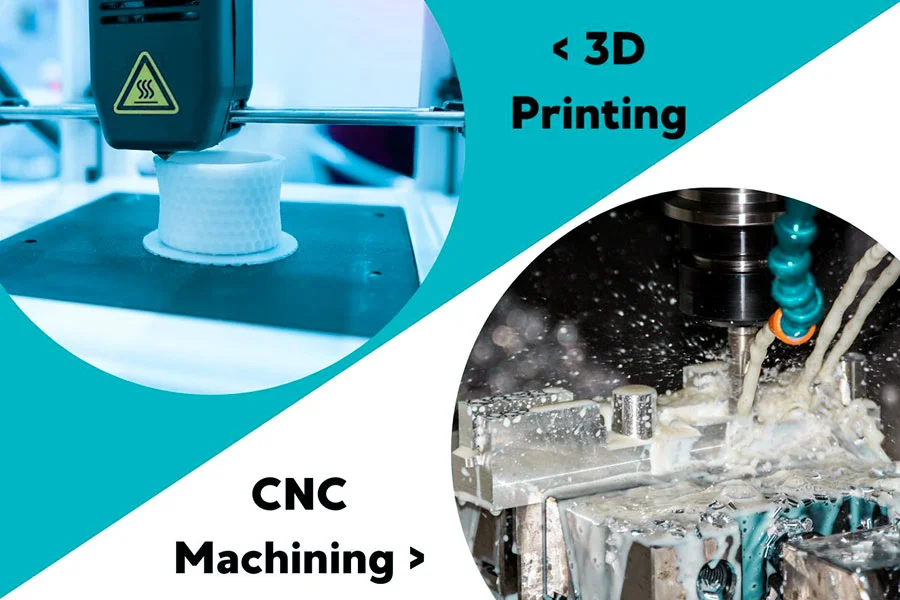CNC Machining Comparison: How To Evaluate Services Through Reviews & Head-To-Head Analysis
In the manufacturing industry, the choice of CNC machining services has a vital impact on product quality and production efficiency. With the intensification of market competition, companies not only need to find suppliers with reasonable prices, but also ensure that their service quality can meet high-standard manufacturing needs. This article will explore how to evaluate services through reviews & head-to-head analysis, and combine actual data and case analysis to help companies make more informed decisions.
What Are The Key Types Of CNC Machining?
There are many main types of CNC machining, which are mainly divided according to factors such as processing methods, equipment configuration and application areas. The following are the main types of CNC machining:
CNC Milling
The movement of the workpiece in CNC milling is controlled by the CNC system, which requires the CAD design of the parts to be processed first, then converting the design drawings into CNC programming language, and finally inputting the written program into the CNC system, which then controls the movement of the tool, cutting speed, feed speed and other parameters to achieve precision processing of the parts.
CNC milling has higher accuracy and efficiency than traditional manual cutting and engraving methods. Since it uses computer programs to control the tool path, it can ensure very accurate cutting and engraving. In addition, its degree of automation can also greatly improve work efficiency. CNC milling can be used to process a variety of materials, including metals, plastics, wood and composite materials. The technology can process a variety of complex shapes, such as holes, protrusions, grooves and curves.
CNC Turning
CNC turning is a machining technology that uses a cutting tool to rotate and cut a workpiece. CNC lathes use computer programs to control the fineness and position of the cutting tool. They can accurately control the speed, force, depth and direction of each machining operation, thereby greatly improving production efficiency and product quality.
Through CNC turning technology, a wide variety of parts and components can be produced, such as shafts, gears, threads, planes, cams, etc. These components can be used to manufacture a variety of different types of machines and equipment. Compared with CNC milling, CNC turning is suitable for processing smaller materials and curved shapes, while CNC milling is suitable for processing large workpieces and projects that require high-precision cutting on flat surfaces.

Milling vs. Turning
5-Axis Machining
Five-axis machining refers to the simultaneous control of 5 axes on the machine tool to achieve efficient and high-precision machining. Three of the axes are linear and two are rotary. The linear axes are responsible for movement in the X, Y, and Z directions, while the rotary axes control the rotation of the machine tool spindle and the workpiece. By coordinating the movement of these five axes, the machine tool can perform multi-angle machining to form more complex shapes.
Compared with other machining technologies, 5-axis machining is mainly used to manufacture parts with complex geometries. These parts are often used in the aviation and medical device manufacturing industries because they require high precision and quality requirements.
5-axis machining
CNC Machining Vs. Other Manufacturing Methods

1. Comparison With Traditional Machining
(1) Precision:
CNC machining: extremely high precision, usually reaching micron or even submicron level. Through pre-written program instructions, CNC machine tools can automatically perform various processing operations on workpieces to ensure that every detail can be accurately presented.
Traditional machining: relatively low precision, greatly affected by the operator’s skill level and experience. Traditional processing is relatively simple in terms of positioning, clamping, tooling, cutting, etc., and it is difficult to achieve high-precision processing.
(2) Efficiency:
CNC machining: high production efficiency, able to automatically complete complex machining tasks without manual intervention. CNC machine tools can work 24 hours a day, and can quickly change tools and adjust machining parameters to complete complex machining tasks in a short time.
Traditional machining: relatively low production efficiency, requiring manual operation to complete machining tasks. Traditional machine tools have limited machining capabilities, require multiple clamping, and require continuous adjustment of tools and cutting parameters during machining.

(3) Cost:
CNC machining: The initial equipment investment and mold making costs are high, but it is suitable for long-term mass production. As the output increases, the unit cost will gradually decrease. In addition, CNC machining can achieve standardized processes, which is easy to manage and reduces production costs.
Traditional machining: The initial equipment investment is low, but the production efficiency is low and it is suitable for small batch production. As the output increases, the unit cost may rise.
2. Comparison With 3D Printing
(1) Applicable Material Range:
CNC machining: Almost all types of metal materials and some non-metallic hard materials can be processed, such as aluminum alloys, stainless steel, plastics, etc. CNC machining is mainly metal machining, and is particularly suitable for parts that require high strength and high wear resistance.
3D printing: Mainly used for plastics and, to a lesser extent, for metals. Some technologies can produce parts with ceramics, wax, sand, and composite materials. But 3D printers cannot use every material used by traditional manufacturers because the high melting point may deform the metal.
(2) Precision And Surface Treatment Capabilities:
CNC machining: extremely high precision, capable of precise machining of complex shapes and tiny details. The surface roughness of CNC machining can usually reach a low level, and the surface quality can be further improved through subsequent processing (such as grinding, polishing, etc.).
3D printing: relatively low precision, greatly affected by printing technology and materials. The surface of 3D printed parts may be rough and require subsequent processing to meet the requirements of certain applications.
CNC machining vs. 3D printing
3. Comparison With Injection Molding
Small batch vs. large batch economics:
CNC machining: has obvious advantages in small batch production. CNC machining does not require mold making, can quickly respond to market changes and customer needs, and is particularly suitable for customized products and prototype development. Although the unit cost of CNC machining may be higher, in small batch production, since there is no need to share the mold cost, the total cost may be lower than injection molding.
Injection molding: suitable for large-scale production. Injection molding requires mold making, and the mold cost is higher, but once the mold is made, injection molding can produce a large number of parts at a lower cost. Therefore, in large-scale production, the unit cost of injection molding is usually lower than that of CNC machining.
CNC machining vs injection molding
